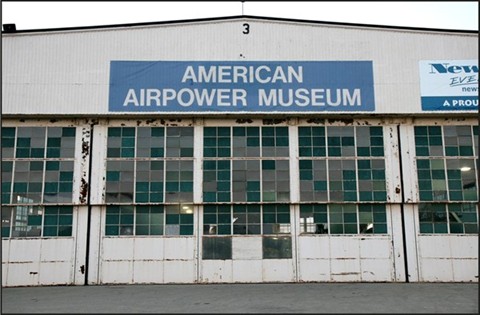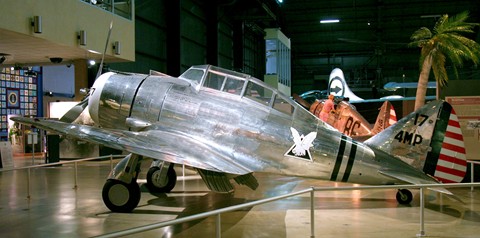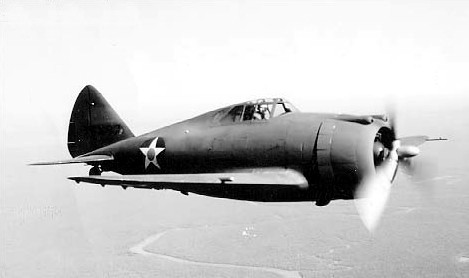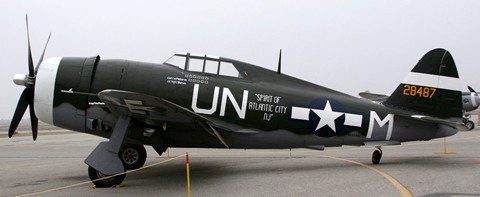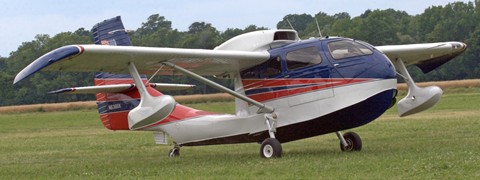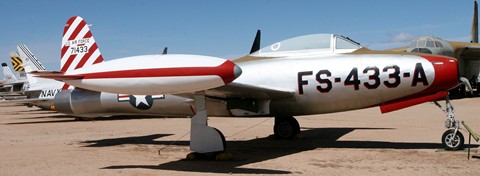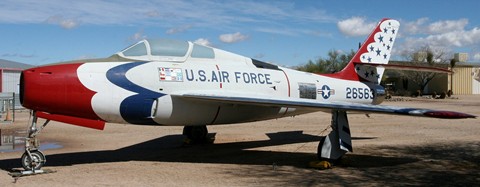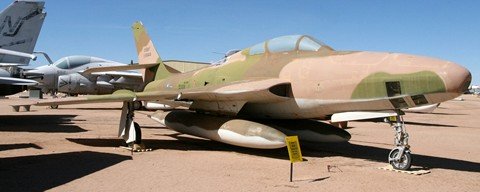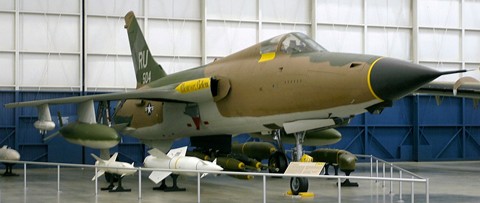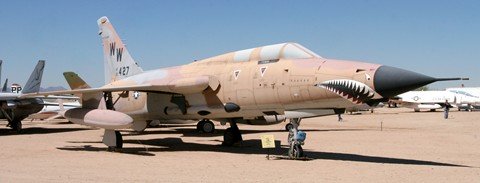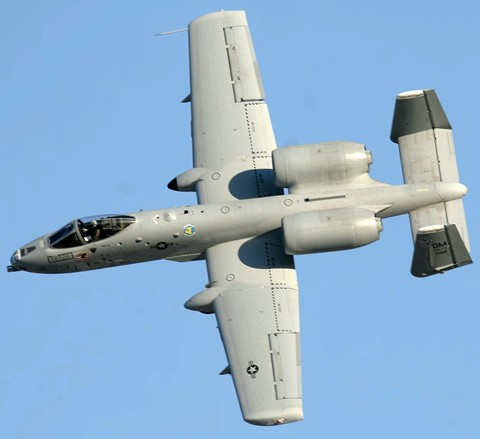|
Republic Aviation
Republic Aviation used to be a sprawling complex where Republic Airport still stands in Farmingdale, NY. One of the last occupied buildings is where you will find the
American Airpower Museum.
There are many interesting Republic Aviation artifacts and storyboards, so please check out our dear friends at the American Airpower Museum. Republic Aviation's Strange BeginningsIn order to chart the history of Republic Aviation, we have to go back to the Seversky Aircraft Company which was founded in 1931 by Alexander de Seversky, a Russian expatriate and veteran WWI pilot who had lost a leg in the war. After several failed attempts at winning military aircraft contracts, Seversky Aircraft finally won a design competition for a new Army Air Corps fighter, and was awarded its first military contract in 1936 for the production of its P-35.
Photo of P-35 above (36-404) taken at the
National Museum of the United States Air Force.
The Army Air Corps was very pleased with the AP-4's medium and high altitude performance and ordered 13 for testing. They were given the designation YP-43. Republic Aviation is BornBy April 1939, Seversky Aircraft Corporation had lost $550,000, and Seversky was forced out of his own company by the board of directors while he was on a business trip. In September 1939, the company was reorganized as the Republic Aviation Corporation. P-43 LancerSeversky's YP-43 continued in development and went into production as the P-43 Lancer (see photo below). A total of 272 P-43 Lancers would be produced, with 108 of them being sent to China to be used against the Japanese. Many of these aircraft would pass through the hands of the American Volunteer Group (AVG) Flying Tigers, who were very pleased with the plane's performance at altitudes up to 30,000 feet. This was an improvement over their P-40 that was ineffective at altitudes over 20,000. Unfortunately, the AVG's leader, Claire Chennault, disliked the early P-43's lack of self sealing fuel tanks and armor. He declined to retain the plane for his crews.
In 1939, both Seversky and Curtiss participated in an Army competition to develop a lightweight interceptor. Curtiss submitted a lightweight version of the P-40 designated the XP-46 while Seversky submitted a similar design designated the XP-47. Both designs used the Allison V-1710 V-12 engine, with the Seversky design using a turbo-supercharger. In the end, neither design showed a significant improvement over the P-40. Neither would see production....yet. Thunderbolt PrecursorFurther development of the P-43 continued using a Pratt & Whitney R-2180 radial engine. The resulting aircraft was known as the XP-44. When the R-2180 didn't produce the expected horsepower, Seversky (now Republic Aviation) switched to the Wright R-2600. Despite possessing 1,600 horsepower, this engine couldn't be turbo-supercharged and Republic finally modified the design again, this time to accommodate the enormous Pratt & Whitney R-2800 Double Wasp engine, which produced an incredible 1,850 horsepower. The resulting aircraft, now known as the P-44 Rocket, was truly impressive. Capable of speeds of 404 mph at 20,000 ft, and a climb rate of 4,000 ft. per minute, the aircraft would have been an exceptional interceptor. Unfortunately, the aircraft was capable of carrying no more fuel than the P-43, and the Double Wasp engine was far thirstier, limiting the aircraft's range. As the air war in Europe progressed, the Army was discovering that what it really needed was a long range fighter capable of escorting bombers into Germany. Alexander Kartveli, Republic's chief engineer, was called to the Army's Experimental Aircraft division and told of the new requirements, and that the P-44 would not be ordered in its current configuration. This was a devastating setback because Kartveli knew the XP-44 could not be redesigned to meet these new requirements. On the train back to New York, he began sketching a new design. This aircraft would become the P-47 Thunderbolt. P-47 ThundeboltThe USAAF refused to give Republic any money for the development of the new XP-47B, so Republic Aviation paid for the construction of the first mock-up, reusing the cockpit area of the P-43. By the time the prototype was ready for testing, it weighed 900 pounds over the Army's limit for the new fighter design. It also could carry only 298 gallons of fuel, 17 gallons less than the requirement, but the Army was generally pleased with its performance, achieving speeds of 412 mph at 25,800 ft, and overlooked these issues.
Photo above: P-47G Thunderbolt ‘Spirit of Atlantic City’ (42-25254, NX3395G) belonging to the Planes of Fame museum in Chino, CA.
They soon placed an order that required Republic Aviation to quadruple the size of their factory and build three new runways at the Farmingdale, NY factory. Eventually this proved inadequate, and in November 1942, the Army authorized the construction of a new factory adjacent to the Evansville, Indiana airport. Throughout the war, the P-47 would undergo constant development. A bubble canopy was added to increase backward visibility. The final version of the P-47 would be the P-47N, a long range version with longer wings and fuselage, and increased fuel capacity. The P-47N was designed to escort B-29's on long missions to Japan for a planned invasion of the Japanese homeland that never came. Production of all versions ended in November, 1945 with 15,660 P-47's being built, making it the most produced US fighter of the war. Of these, 1,816 would be the long range P-47N model. This model would continue to serve with Air Force Reserve and Air National Guard units until the mid 1950s. RC-3 SeabeeIn 1946, Republic temporarily pursued the civilian aircraft market to produce the Republic RC-3 Seabee, an unusual all metal amphibian. The Seabee was the brainchild of Percival "Spence" Spencer, a former Republic P-47 test pilot. Percival convinced Republic of the need for a light sport plane to meet a demand for private aircraft from pilots returning from WWII. The expected sales of 5,000 Seabees a year never materialized, as most returning pilots never flew again, though Republic did manage to sell 1,060 Seabees in two years of production. This was a respectable number at a time when many small aircraft manufacturers were producing only a handful of aircraft before going bankrupt. Much of this was due to the Seabee's remarkably low price starting at $3,500.
Photo above: RC-3 Seabee (615, N6386K) at the 1941 Historical Aircraft Group air show, Geneseo, NY. F-84 Family (Thunderjet, Thunderstreak, Thunderflash)In 1946, Republic again turned its attention to military contracts, developing a single engine jet fighter to meet an Army requirement for a fighter with a top speed of 600 mph. The first YP-84A Thunderjet flew on February 28, 1946, but the aircraft was plagued with so many developmental problems that the first F-84B didn't enter Air Force service until 1949. Greater success came with the straight wing F-84D which would go on to become an important aircraft during the Korean War, flying 86,408 missions. In 1949, a swept wing version known as the F-84F Thunderstreak was developed but additional development and engine problems resulted in the aircraft not entering service until 1954. A photo-reconnaissance version known as the RF-84F Thunderflash was developed from the F-84F with 715 produced. The final straight-wing version, known as the F-84G, would continue in service with Air National Guard units until 1971, when corrosion forced them to be withdrawn from service.
Photos above from top to bottom: F-84C Thunderjet (47-1433) F-84F Thunderstreak (52-6563) F-84F Thunderflash (51-1944) All photos taken at
Pima County Air and Space Museum, Tucson, AZ.
F-105 ThunderchiefIn 1951, Alexander Kartveli began to design a replacement for the F-84 Thunderjet. The new aircraft would be a single engine fighter, but larger than any single engine fighter ever designed for the Air Force. By the time the mock-up was completed in October 1953, the aircraft had grown so large that a more powerful engine was needed, finally settling on the Pratt & Whitney J75. On June 28, 1954, the Air Force placed an order for 15 of the new F-105A Thunderchiefs. The aircraft weighed 50,000 lb, but could carry up to 14,000 lb of bombs and missiles, and could fly at Mach 1 at sea level and Mach 2 at altitude. Although it had only one engine, the F-105 Thunderchief could carry a larger bomb load than a four engine WWII bomber, and travel a much greater distance at much higher speed. The F-105 would become the primary ground attack aircraft of the Vietnam War, flying over 20,000 missions until replaced by the F-4 Phantom II in November 1970. Of 833 F-105s produced, 397 were lost in combat in Vietnam. Seventeen were shot down by North Vietnamese MiG's while the rest were lost mostly to ground fire. The F-105 was to be Republic Aviation's last independent design. A two seat "Wild Weasel" version known as the F-105G was later developed to replace the "Wild Weasel" version of the F-100. The first F-105G flew on January 15, 1966, and deliveries began arriving in Southeast Asia in June 1966. This version continued operating in theater long after the ground attack versions had been withdrawn and was still in service at the end of the war.
Photos above from top to bottom: F-105D Thunderchief (60-0504) at the
National Museum of the USAF.
The Final YearsIn December 1957, Republic Aviation developed a helicopter division, building the French Alouette helicopter under license but with marginal sales success. In an effort to keep the company going, Republic developed a medium range civilian turboprop called the Rainbow. The aircraft would be very fast for a prop plane, but interest from airlines was not sufficient to continue development of the aircraft and the project was canceled. Republic Aviation made one last attempt to survive by returning to military contracts. In 1960, Republic Aviation acquired a minority interest in the Dutch aircraft company Fokker, and attempted to market a Fokker designed attack plane to the Air Force, but the Air Force showed little interest in the foreign design and no contracts were offered. Photo below of A-10A Thunderbolt (80-0168) taken at the 2007 Aviation Nation air show at Nellis AFB. In the early 1960's, the aerospace company Fairchild, owned by Sherman Fairchild, began purchasing Republic's stock and finally acquired Republic Aviation in July 1965. In September, Republic became the Republic Aviation Division of Fairchild Hiller. Republic Aviation ceased to exist as an independent company. Republic's tradition of naming aircraft was carried forward by Fairchild Hiller with the A-10 Thunderbolt II. The aircraft is better known by its unofficial title "Warthog".
Navigation Index
|
